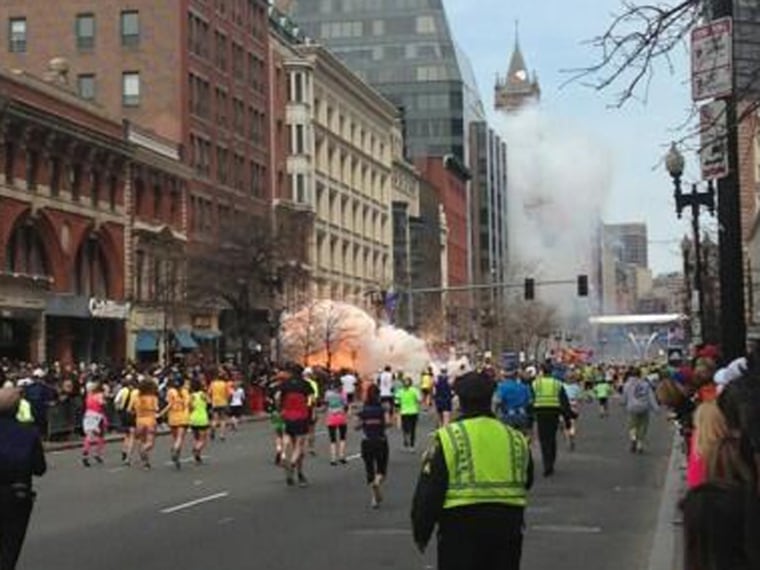People around the world have live-tweeted natural disasters, elections and revolutions.
New work from researchers at Harvard Medical School show that a glut of tweets might help paramedics respond to health emergencies like those after the Boston Marathon bombings in April.
"Twitter gave an incredible characterization of this event in just two stem words," Chris Cassa, a co-author on the study and a researcher at Harvard Medical School and Brigham and Women's Hospital, told NBC News.
Cassa and a team of health data tracking experts analyzed tweets that appeared in the 20 minutes after the first bomb went off on April 15. They explain that public tweets could be useful if they were integrated into the state-wide alert systems such as the Massachusetts Health and Homeland Alert Network. They describe their work in the July 2 issue of PLOS Currents.
Rumi Chunara, a researcher at Harvard Medical School and Boston Children's Hospital, another co-author, looked specifically for two keywords — words beginning with "explo-" and "bomb" — and saw a noteworthy spike in mentions within a few moments after the first bomb went off. She also found that using location data from a cluster of tweets in that time frame, she could zoom in on where the event was taking place.
"We saw that there were so many people in the area that were talking about it right away," Chunara told NBC News. If a similar event in the future needed health responders to act quickly, where "minutes do matter," "this would be a good way to get a very early signal," Chunara said.
The two propose that public tweets selected by geography could be included in the routine monitoring signals that emergency responders already track, targeting certain keywords. The monitoring would be particularly useful in local, community organized events in which a large crowd gathering was expected.
Chunara is a member of the Health Map research group at Boston Children's Hospital which uses digital signals to trace the growth and movement of diseases epidemics. She was part of a team that used social media, news reports and government data to map patterns in the spread of the 2010 Haiti cholera epidemic.
Nidhi Subbaraman writes about technology and science. Follow her on Facebook, Twitter and Google+.
